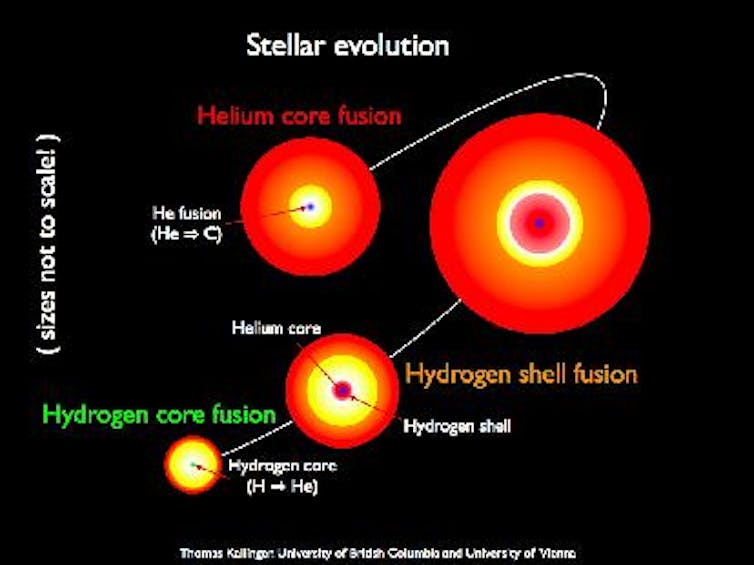
In the same way that seismologists use earthquakes to learn about the structure of the Earth’s interior, asteroseismologists use “starquakes” to explore the internal structure of stars like our Sun.
Using observational data from NASA’s Kepler Mission, we’ve been able to examine the light coming from hundreds of red giant stars, giving us detailed new information about the cores of these stars.
Red giants are evolved stars that have burned all the hydrogen in their cores into helium through a process of nuclear fusion and instead burn hydrogen in a surrounding shell. Towards the ends of their lives, these red giants also start burning the helium in their cores.
To study the cores of these red giants, and therefore determine how old they are, we’ve been using Kepler’s data to monitor the changes in brightness at the surface of these stars.
These changes in brightness are a result of pulsations inside the star triggered by the turbulent motion of convection, which we can think of as a continuous series of starquakes. These quakes create sound waves that travel down through the interior of the star and back to the surface.
Under the right conditions, these waves interact with other waves trapped inside the red giant’s helium core. It is these “mixed oscillation modes” that are the key to understanding a star’s particular life stage.
By carefully measuring very subtle features in the brightness changes we can see that some red giants have started burning helium, and are therefore at a later stage of life.
We are very excited about the results, which have been published in Nature. We had some idea from theoretical models that these subtle oscillation patterns would be there, but we did not expect to see it so clearly. The results allow us to tell red giants apart, and we will be able to compare the fraction of stars that are at the different stages of evolution in a way that we couldn’t before.
One hope is that this research, and the research that will follow, will help us to learn more about our own Sun, the star that makes life on Earth possible.
By Tim Bedding, Professor of Astrophysics at the University of Sydney
More information and images relating to this research can be found at Professor Bedding’s webpage.
Read more at Nature